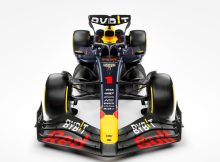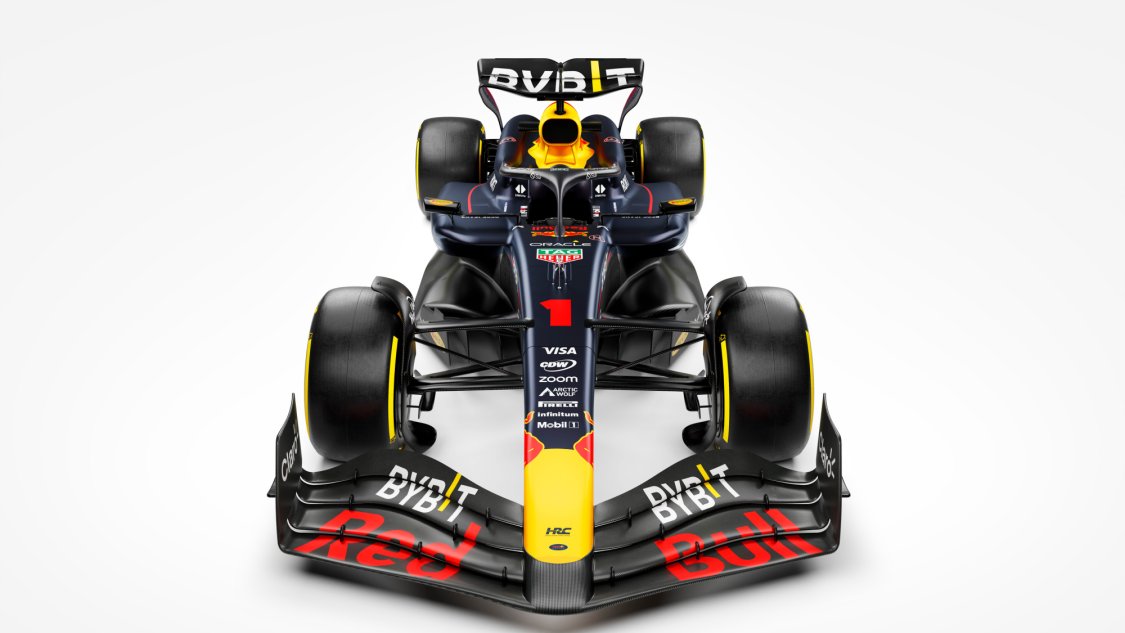

The underbite intake and undercut solution Red Bull has developed over the last two seasons have been replicated by rival teams.
On the RB20, however, Red Bull has done away with the underbite in favor of an overbite arrangement. The high panel now forms an extension of the sidepod’s upper surface, and the inlet is mated to a very large undercut down below.
You might wonder, “What inlet?,” and you would be correct—the team’s released renders show no such feature. However, it was barely discernible from the photos of the RB20 being shaken down at Silverstone that there was a vertical inlet next to the chassis.
Those there for the actual launch have also corroborated this; we’ve included an illustration of what that may look like below (inset).
You may be asking yourself, “Wait a minute, haven’t I seen this before?” with reference to that inlet. and you’d kind of be right—it reminds me a lot of Mercedes’s vertical intake from the previous season, when the company tried to bring the zeropod concept to life one more time.
Furthermore, the vertical inlet on Ferrari’s SF-23 and SF-24 is located in this position; however, it powers the bypass ductwork instead of serving the primary purpose of cooling the internal components.
To be clear, Red Bull has not attempted to replicate the zeropod in this instance. Instead, it is a hybridized solution that combines a vertical intake with a broader, high-waisted, extreme undercut, downwashing ramp solution.
Because the car still has full width bodywork to encapsulate those ancillaries, the team has also avoided having to excavate the sides of the chassis in order to push the radiators towards the centerline, unlike Mercedes.
After an intense development program with the RB19 last season, which helped drive performance from the undercut, the arrival of this vertical inlet is the result. The team’s underbite-style solution was raised higher with each iteration, culminating in the update that arrived at the Hungarian Grand Prix.
Based on the shift in tack, it seems that the underbite solution had reached its limit. The regulations’ dimensional restrictions regarding the inlet’s width, as it is raised higher, make it more challenging to strike a sensible balance between enhancing aerodynamics and supplying the required cooling.
A few losses related to the behavior of the airflow and pressure in this area may also result from positioning the inlet vertically next to the chassis. Nonetheless, expanding the options with the undercut’s breadth and depth is probably a fair trade-off.
A deep midline cut that is excavated nearly to the back of the downwash ramp and gently tapers outward from there is fed by the undercut itself.
This very likely improves the behavior of the air on the upper surface of the bodywork by eliminating the inlet located at the top of the sidepod and substituting it with an overbite. And to capitalize on this, Alpine set the trend that the sidepod is currently following, using a mild waterslide gully to generate flow separation that improves airflow management into the coke bottle region.
It has also sought to enhance this area of the vehicle, though not exclusively; rather, it has done so by using a different concept that was first introduced in the Mercedes of the previous year.
The shelf-like protrusion on the engine cover of the RB20 has the dual characteristics of creating a deep waterslide gully on its upper surface that slopes sharply at the back and having a very high waist with a depression that is only broken by an outlet forward of the upper wishbone’s lead arm.








